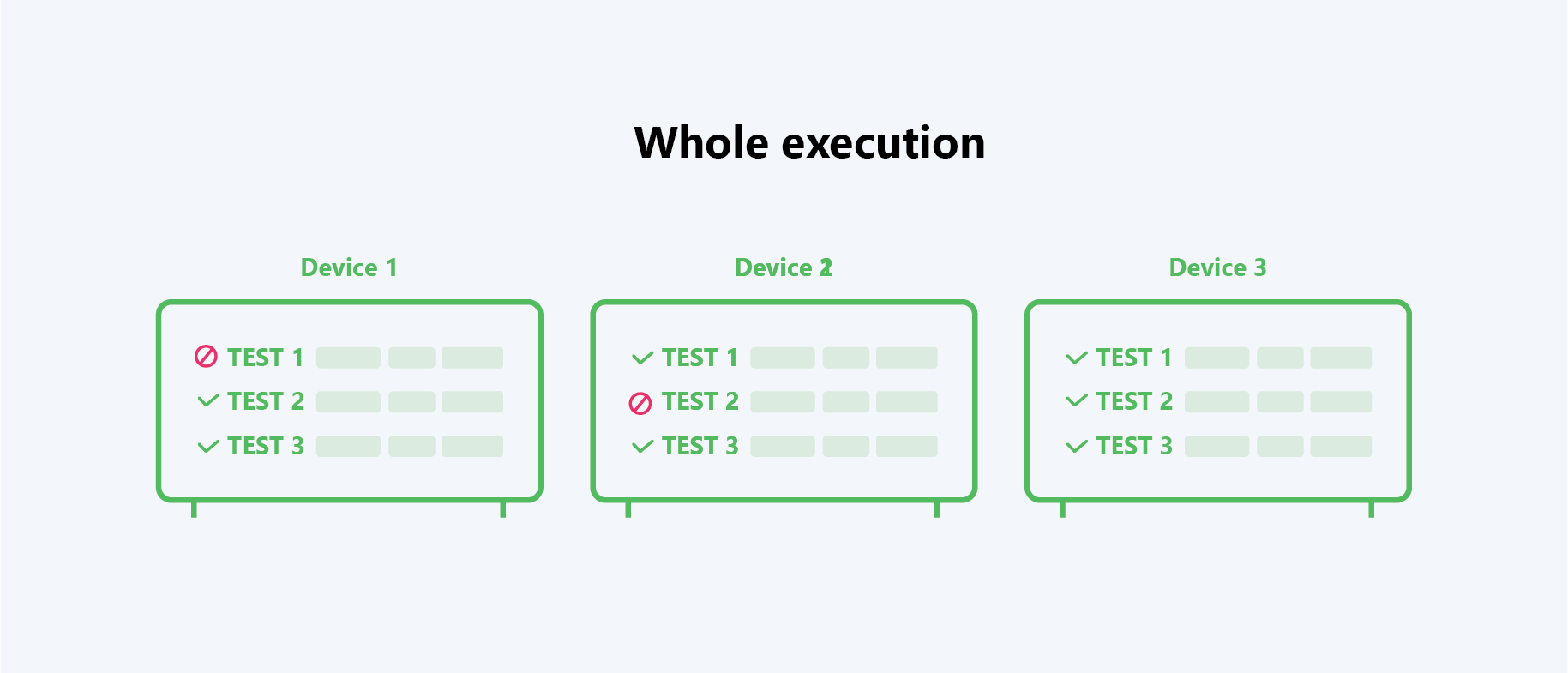Re-executing failed tests¶
When some tests in your test pack execution run fail, you may want to re-execute them, but without the complete test pack execution.
Each test pack execution consists of iterations, so you are able to re-execute any iteration and by that create a new one.

Strategy selection¶
When re-executing an iteration, Suitest offers a selection of strategy. Strategies should help you to select the right combinations of test executions to be re-executed.
Suitest considers the following execution statuses as failed:
- fatal
- failed
- aborted
Therefore, the following execution statuses are considered as success:
- passed
- passed with warnings
- exited
You can select from the strategies below.
Only failed¶
Re-executing only those tests on those devices where the original execution failed.
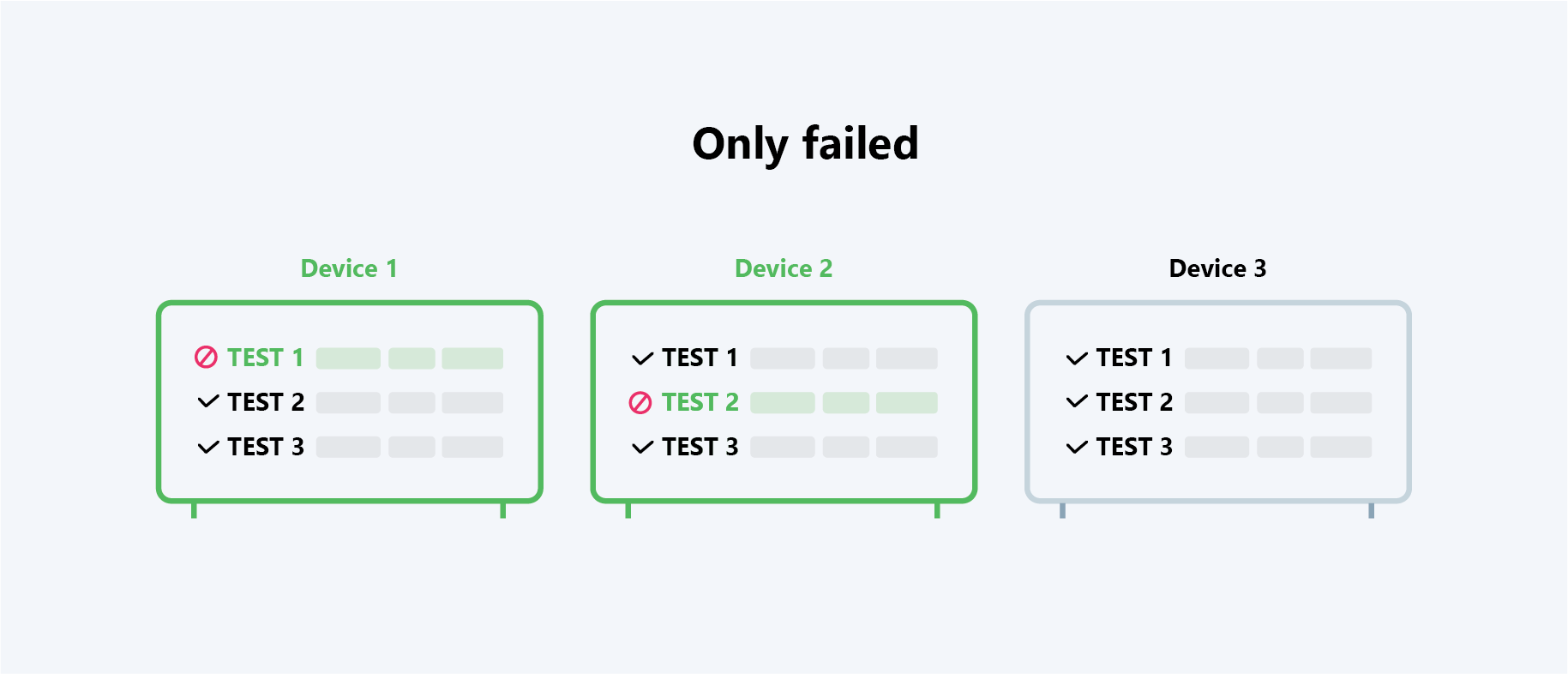
Flaky test¶
Under the expectation that failing tests are "flaky" (unreliable), re-executing the tests that failed across all devices defined inside the test pack.
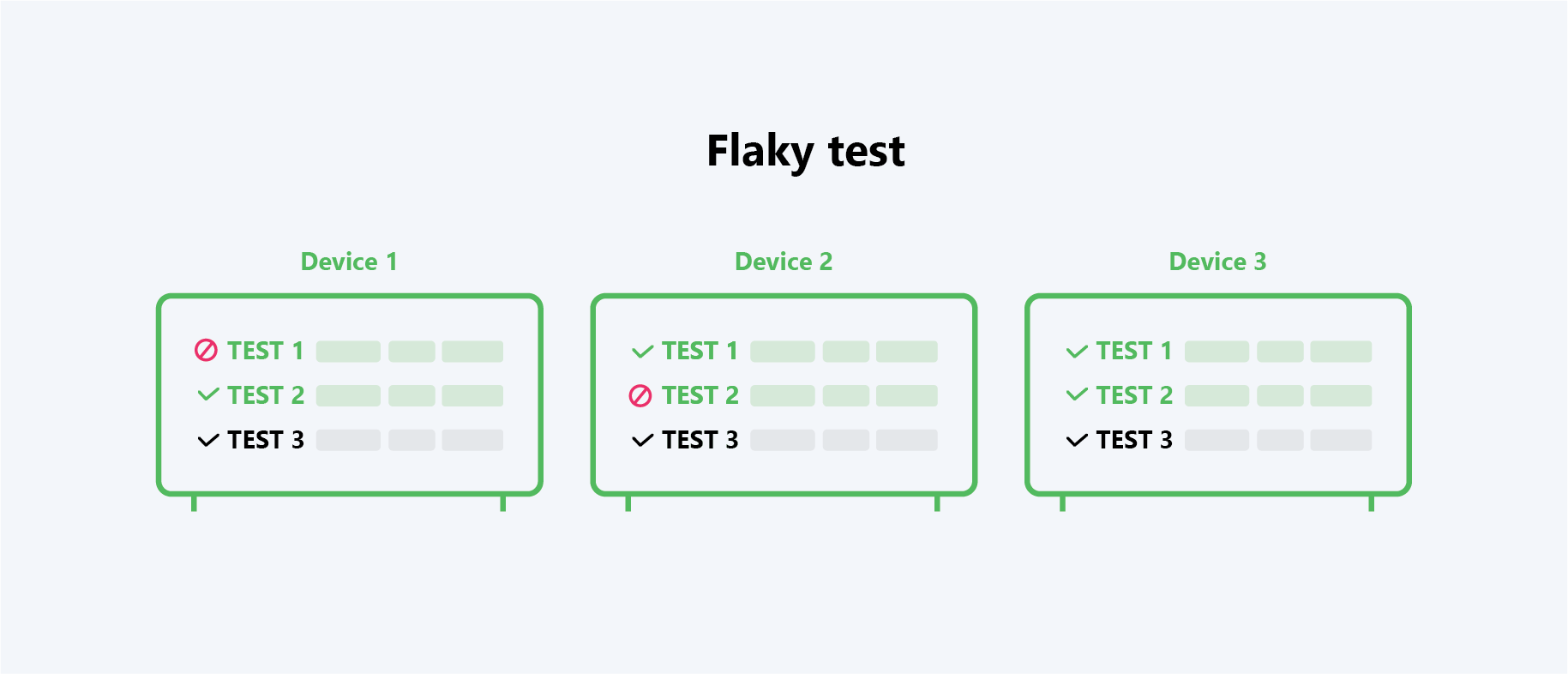
Flaky device¶
Under the expectation that failing devices are "flaky" (unreliable), re-executing all tests on devices where some tests failed.
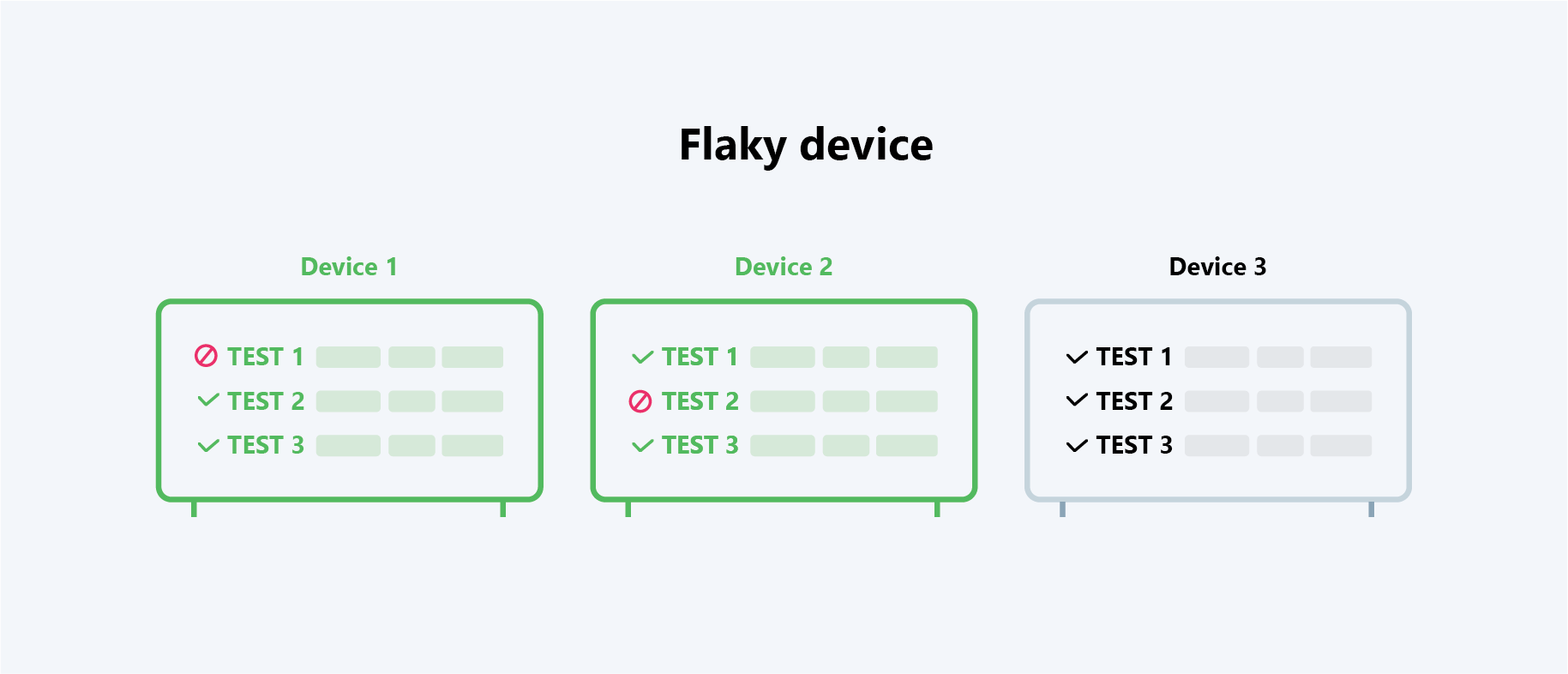
Flaky test or device¶
Under the expectation that both tests and devices may be "flaky", re-executing all tests that failed at least once on all devices where at least one test failed.
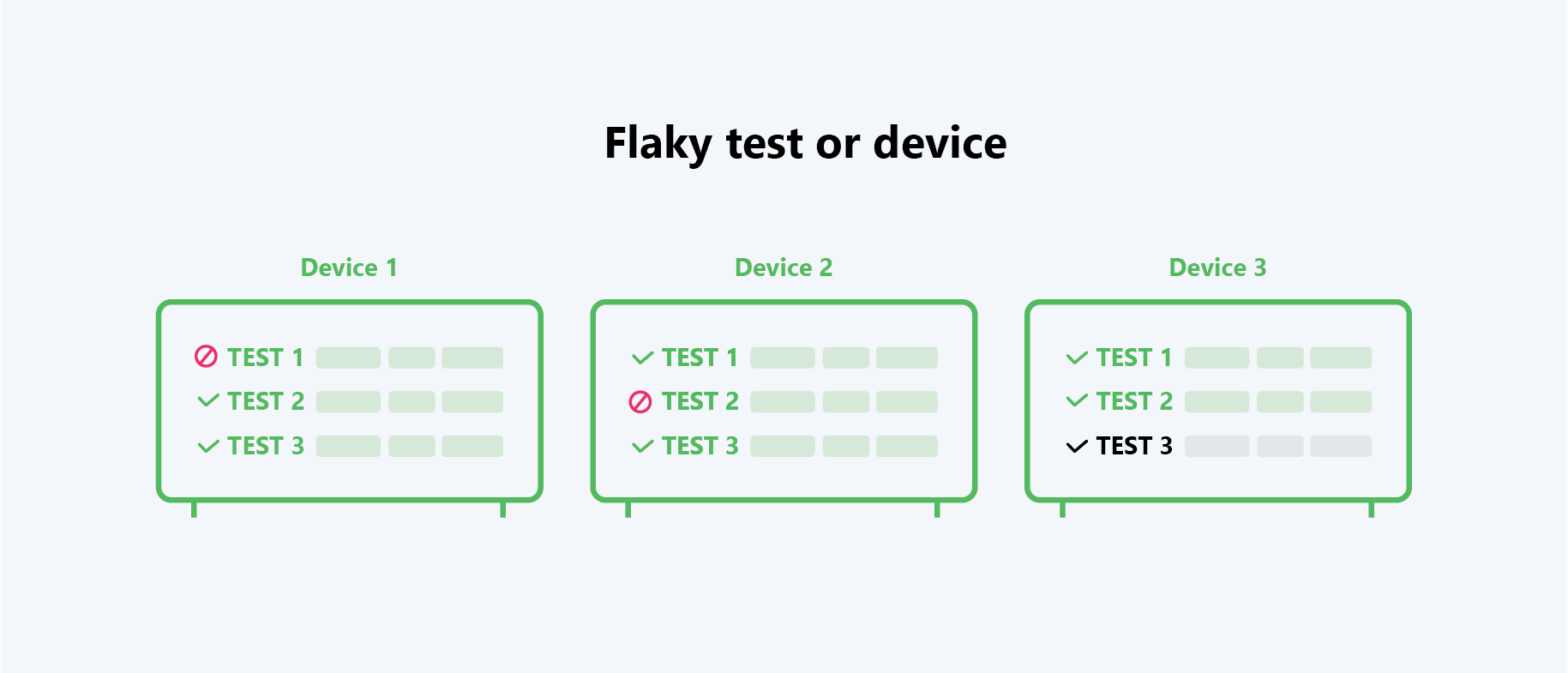
Whole execution¶
Re-executing the whole iteration, no matter which tests failed in the original one.
